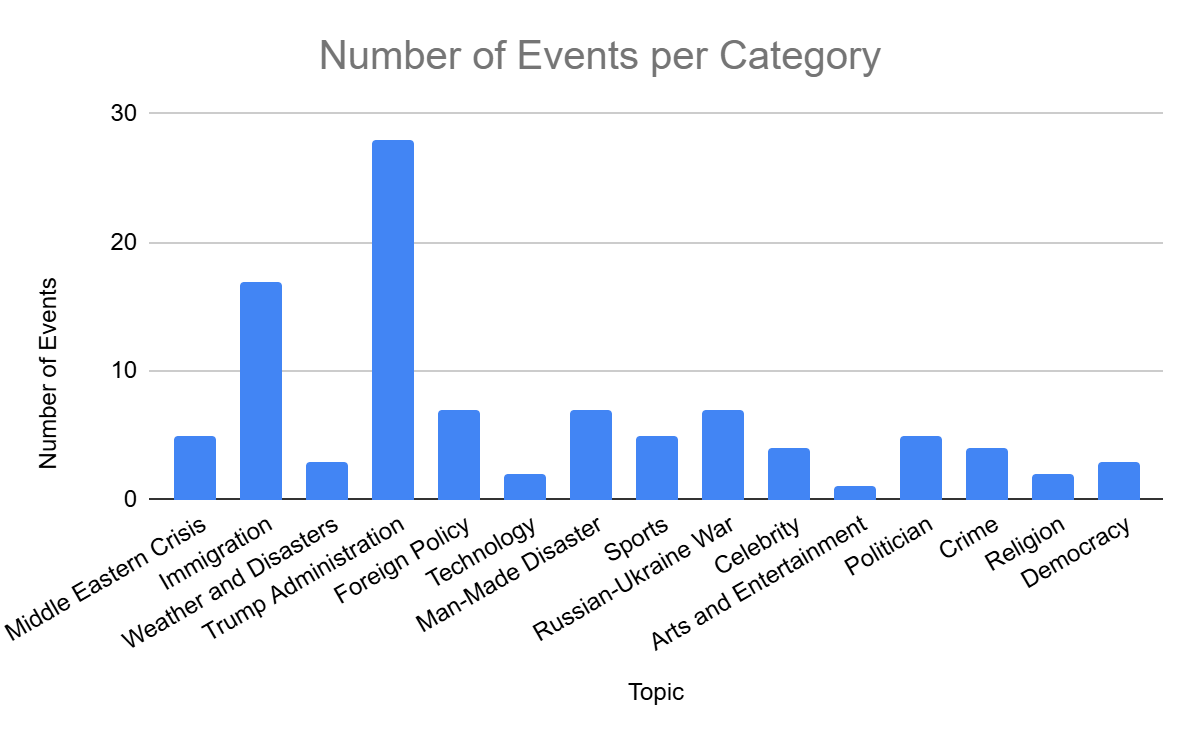Understanding Media Bias: What Our Dashboard Shows
By Delphine Gardiner
In this interactive dashboard you can explore different views that highlight the distinctions between the major US news publishers. The Media Bias Detector is unique from other sites in that it analyzes bias at the article level and even the sentence level, not just at the publisher level. By customizing topic features, date ranges, and toggling between political lean and tone (negative, neutral, positive), you can gain your own insights into the data. These are some of the main findings we came across when interacting with the dashboard ourselves.
Media coverage distribution across US news publishers
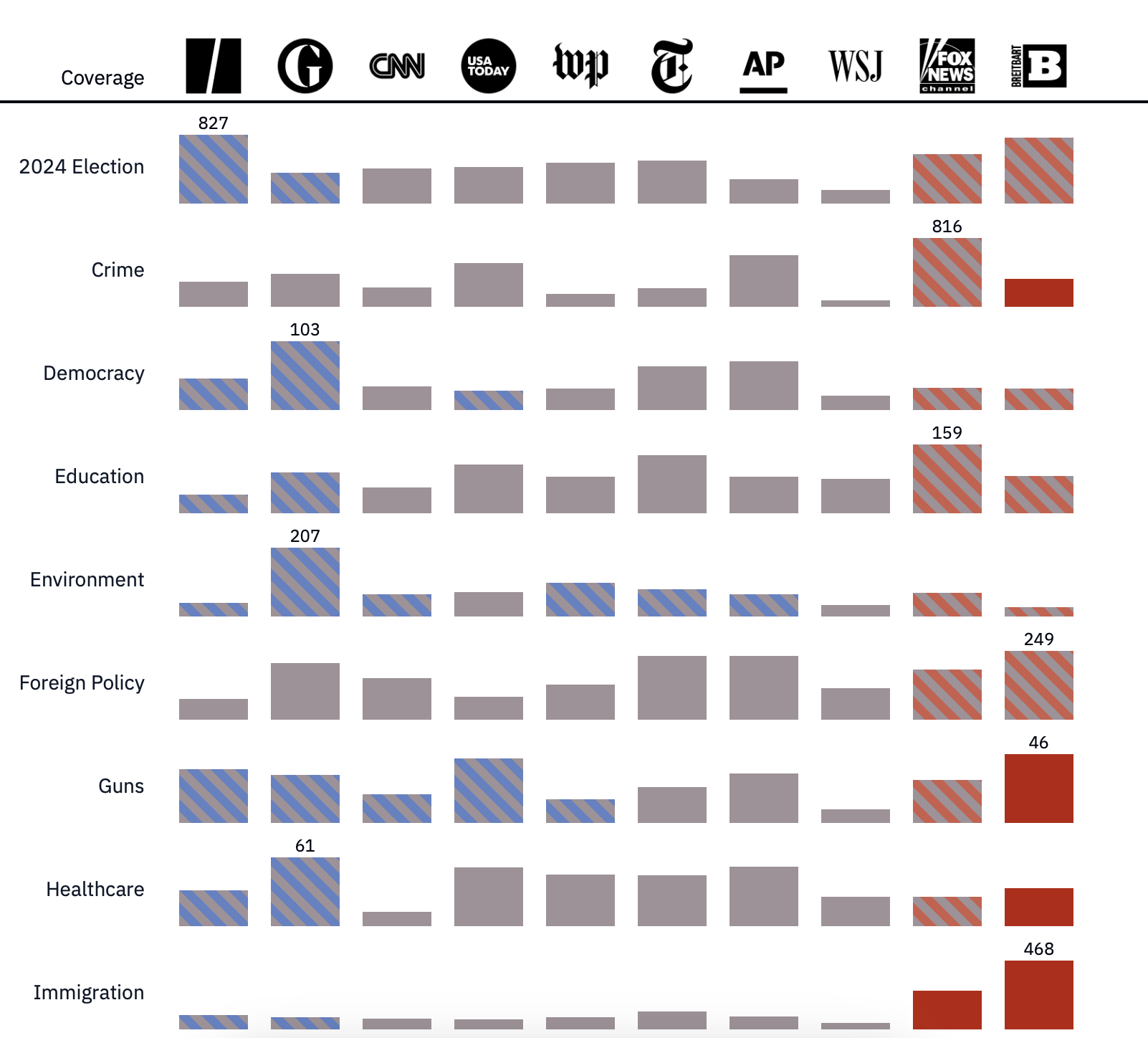
The differences in coverage volume exhibits selective coverage, or the journalistic choices of prioritizing coverage on certain topics over others as seen in Figure 1 (click here). The Wall Street Journal (WSJ) has posted mostly neutral articles (shown in gray) this year so far, while on average, articles from Fox News and Breitbart are mostly right-leaning. Huffington Post and The Guardian had mostly left-leaning coverage with the exception of a few topics including Crime and Foreign Policy which received more neutral coverage from these outlets.
When it comes to topic coverage, left-leaning outlets tend to cover more on Healthcare, Democracy, and the Environment while right-leaning outlets have significantly more coverage on Immigration and Crime.
What publishers focused on during the Israel-Gaza War
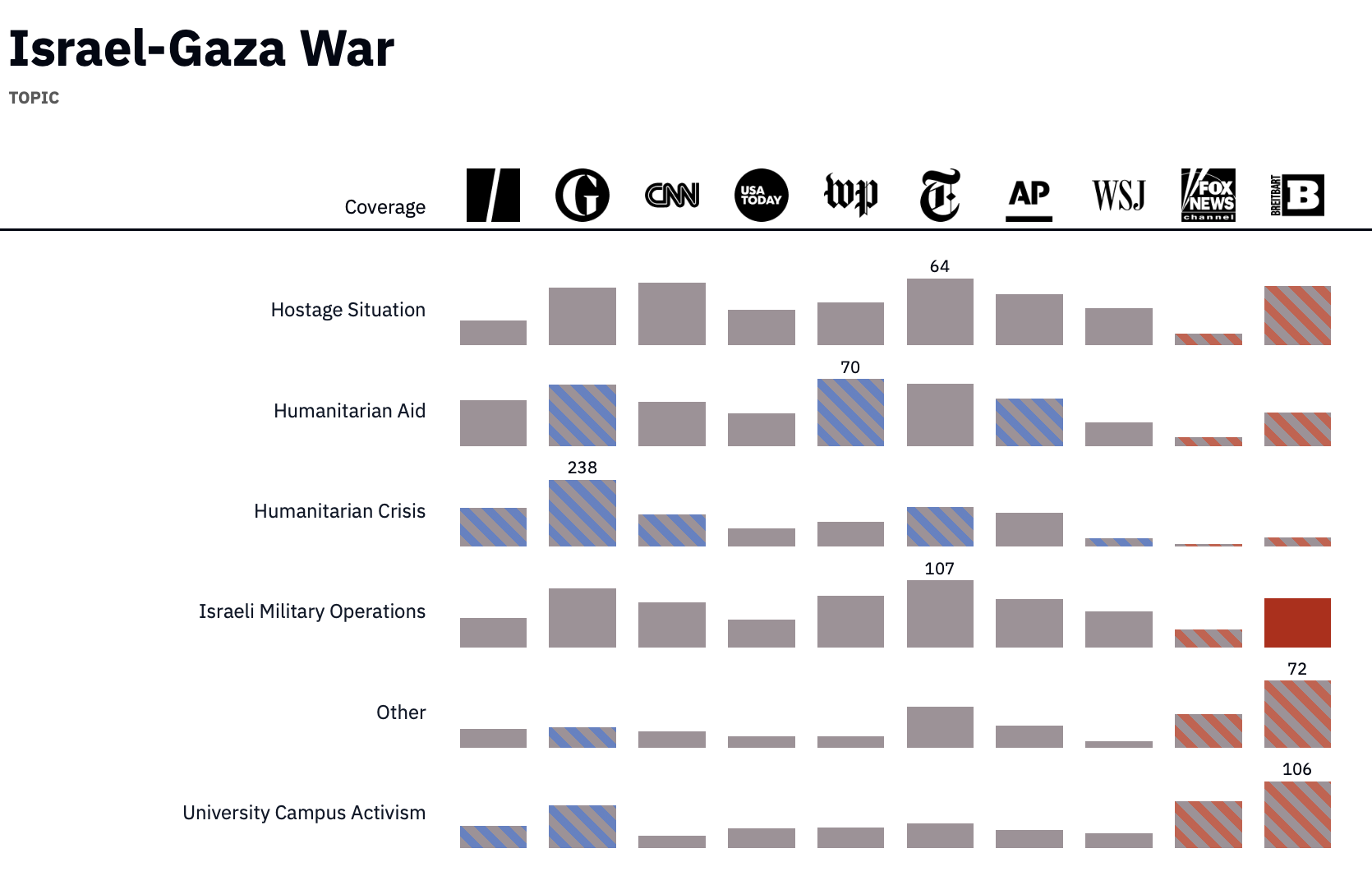
On average, Humanitarian Aid and Humanitarian Crises have received more coverage from left-leaning publishers compared to right-leaning ones (click here). In contrast, right-leaning outlets covered more on the University Campus Protests. Most publishers have produced a mix of neutral and slightly-partisan coverage of various aspects of the conflict. However, right-leaning outlets tend to lean partisan (mostly slightly-partisan) in their content.
Discrepancies in crime coverage among publishers

Notably, Fox News has the most coverage on violent crime (click here), with 376 articles published since the beginning of 2024 compared to all the other publishers, and crime as a whole makes up 25% of its political coverage. Fox News and Breitbart have a mix of slightly partisan and partisan articles on crime; though Breitbart reports less on crime than Fox News, its articles are more right-leaning.
Most covered events of the year
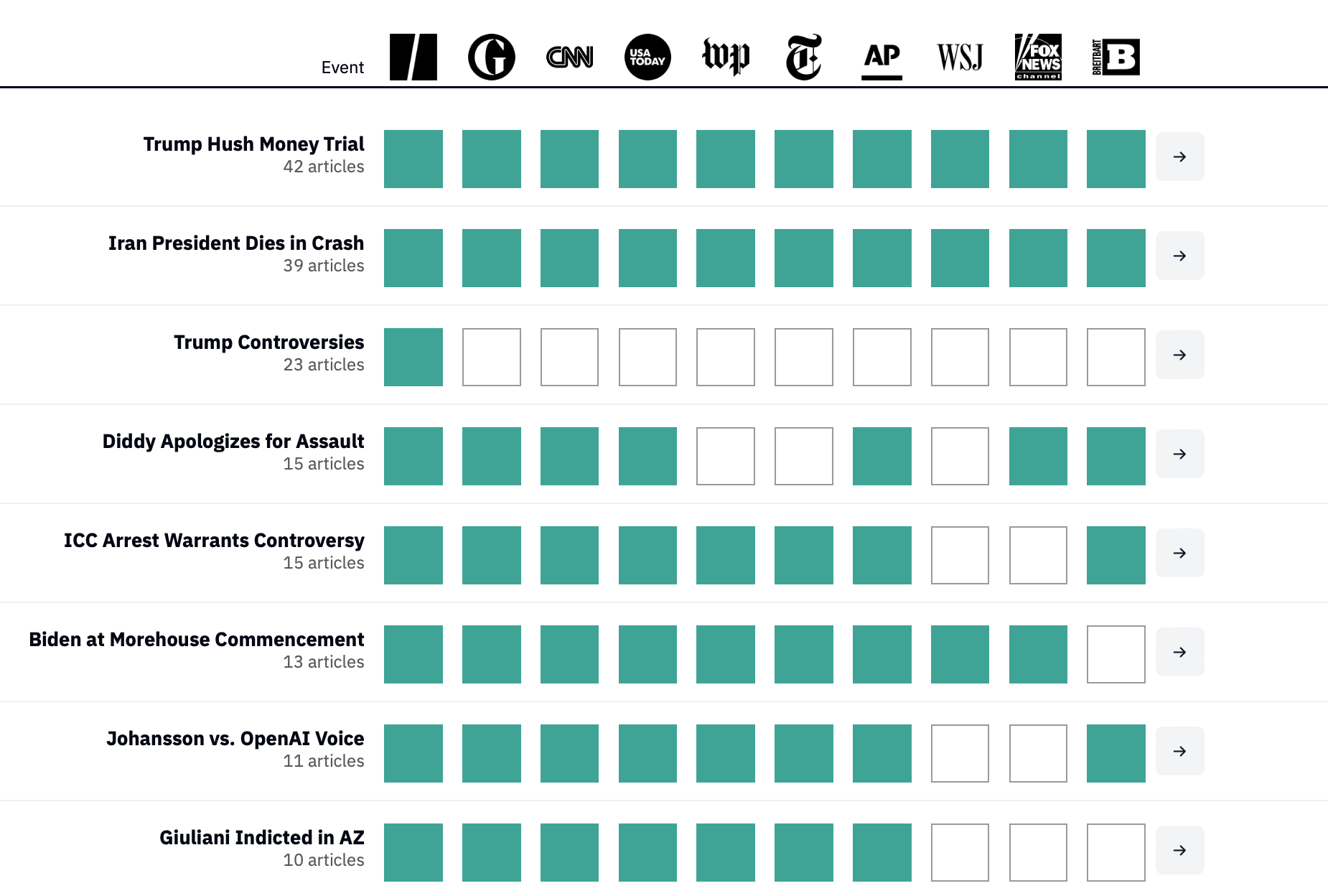
These are the major events that received coverage from every prominent US publisher this past year:
January
February
March
April
May
June
Publishers regardless of ideology have mostly negative coverage across various topics
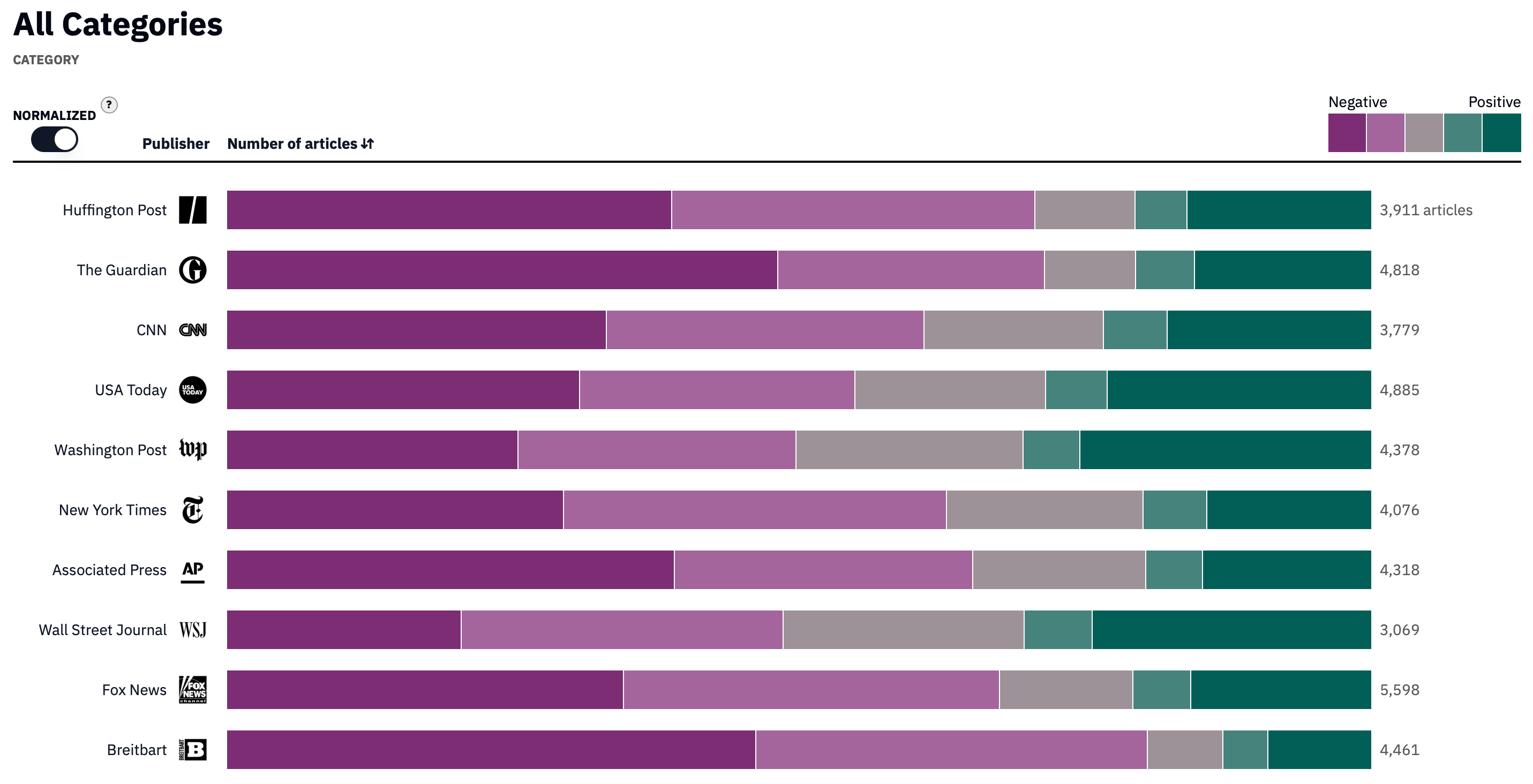
Viewpoints that receive more coverage than others can shape public perception, as it can influence how much importance Americans place on these topics, a phenomenon also known as agenda-setting. This is important to address as consistent negative coverage (click here) can create distrust towards the media, polarize news audiences, and contribute to echo chambers. Consistent negative coverage on the economy
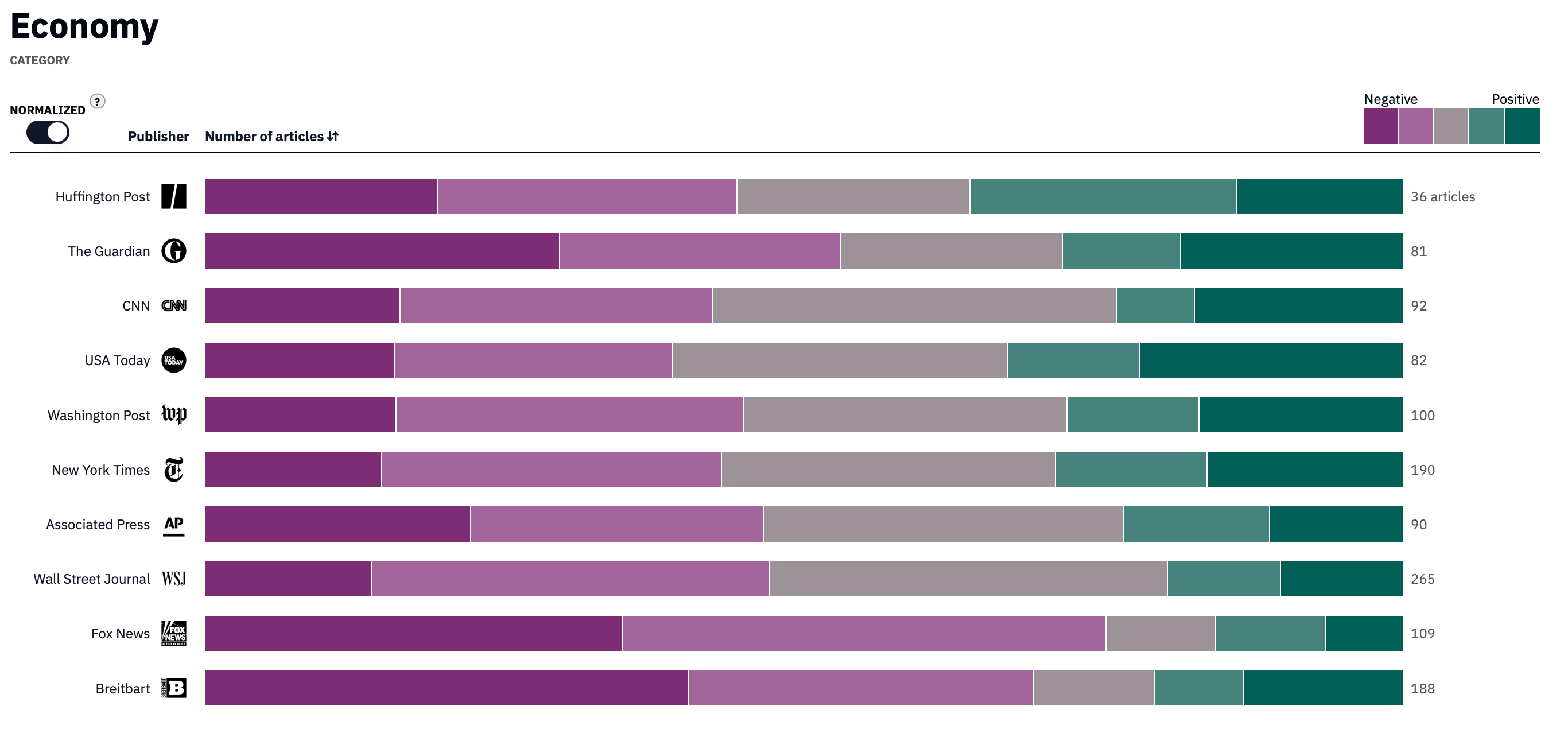
Many Americans generally hold negative views about the U.S economy, despite indications from the Federal Reserve Economic Data that it is doing well this year, with GDP growth and low unemployment rates. These negative attitudes are attributed to increases in negative coverage on the economy (click here) and more negative coverage compared to positive news. We find that Fox News and Breitbart articles on the economy are especially more negative compared to other publishers.
The Media Bias Detector dashboard provides a glimpse into the media landscape and the editorial choices that different US news publishers make when covering various topics, as highlighted in the findings we have come across from interacting with the dashboard. We hope to provide a real-time tool that provides more transparency into US publishers and better informs anyone interested in media to learn more about how bias can manifest in the news.

